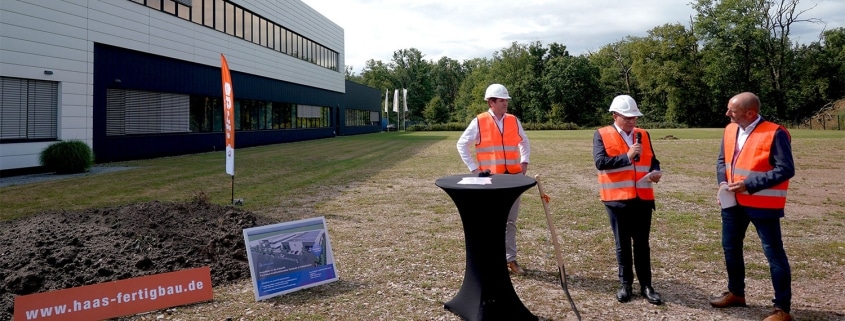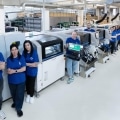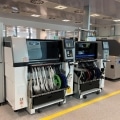Interview with Stefan Janssen on the occasion of the groundbreaking ceremony for FUJI’s new multifunctional building
Mr. Janssen, today marks the official start of construction on a new multifunctional facility on FUJI’s site in Kelsterbach. What exactly is being built – and why now?
Today is a very special day for us. The groundbreaking is not just the launch of a construction project; it also carries strong symbolic meaning. In economically challenging times for the industry, we are making a conscious statement: we are investing in the future – in our customers, in our European operations, and in our own continued development.
Specifically, we’re building a modern operations facility with approximately 2,370 square meters of additional space. It will combine warehouse capacity, service and repair zones, and modern office and meeting spaces under one roof. This expansion strengthens our infrastructure – not only for the benefit of our local customers, but with an impact that will resonate far beyond the region.
What do you expect to gain from the new facility?
Our objective is clear: we aim to further optimize our supply chain processes and significantly improve our response times to customer demands. In a highly competitive market, this is a key differentiator. The new facility provides exactly the framework we need – with greater flexibility, streamlined workflows, and shorter internal routes.
At the same time, the building is designed with scalability in mind. It lays the foundation for future developments – whether through further growth, new service offerings, or adapting to technological change.
How does this project align with the long-term strategy of FUJI EUROPE CORPORATION?
We believe in Europe – even in challenging times. Our group in Japan and we, as the European subsidiary, are fully aligned and committed to this investment. Europe remains a key market for us, with demanding requirements and significant potential.
With this construction project, we are making a clear commitment to Germany as a location. We want to remain close to our customers, offer short delivery times, provide local service – and do so at a high operational standard. This new facility is therefore a strategic cornerstone for strengthening our long-term presence in Europe.
Were there any major challenges in planning the project? What was particularly important to you in the process?
Projects of this size in Germany are naturally complex – particularly when it comes to permits and bureaucratic procedures. Together with the city of Kelsterbach and our construction partners, we’ve successfully navigated those step by step.
Sustainability was a top priority throughout. We consciously chose a timber construction and are relying entirely on renewable energy sources. Fossil fuels are no longer part of our operations. Instead, modern heat pump systems ensure comfortable indoor climate conditions, the green roof improves energy efficiency, and our expansive photovoltaic system generates more electricity on sunny days than we consume – including the power supply for our steadily growing electric vehicle fleet.
Architecturally, we also placed great importance on continuity: the new building’s design echoes the existing structure and blends harmoniously into the surrounding environment. This is another expression of our long-standing and deep-rooted connection to Kelsterbach.


